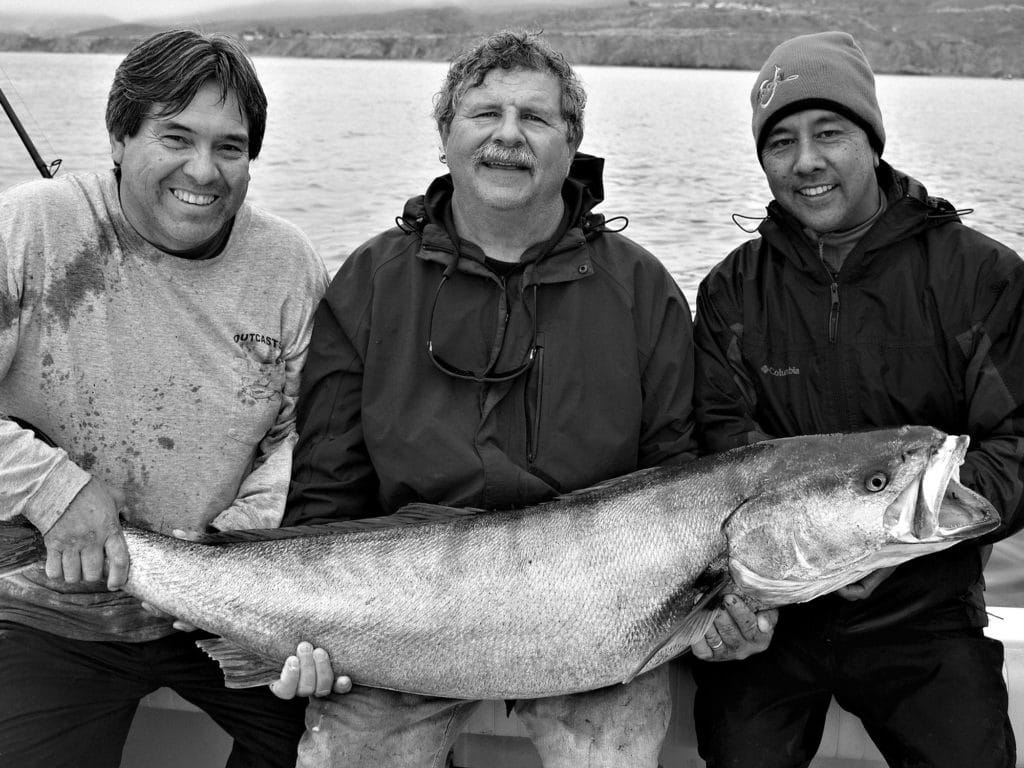
Pacific common dolphins roll, dive and attack densely packed schools of anchovies in 80 feet of water while terns squawk and plummet from above. Such feeding frenzies are seen often but ignored by many Southern California anglers.
Yet savvy fishermen, like Greg Stotesbury, know porpoises and birds mean white sea bass of immense proportions — croakers in the 40- to 70-pound range — feeding on the same anchovy schools. It’s that porpoise connection that leads to catches of some huge white sea bass. “Massive schools of anchovies move up the coast in spring and early summer,” Stotesbury explains. “That attracts predators, including porpoises, barracuda, mackerel and white sea bass.” For decades, California anglers have targeted tuna under pods of porpoises offshore, but few realize that porpoises feeding close to shore indicate the presence of white sea bass.
Spring Migration
“These fish are on the move, following the bait, heading up the coast,” Stotesbury says. “But when they find food in an area, they hang around for a few days. Once the bait moves, the sea bass move on too.” Some of the best times to target open-water whites is when anglers start catching barracuda, says Capt. Barry Brightenburg, whose Always an Adventure Fishing Charters often targets these oversize croakers. “The barracuda follow the same bait. When you see the counts go up for barracuda on the sport-fishing boats, it’s time to target open-water sea bass.”
In years past, this convergence of marine life most often occurred in May when the water approached 65 degrees, but fluctuating sea temperatures sometimes alter nature’s timing. In cold-water years, it occurs in June or July; during strong El Niño episodes, it might start as early as March or April.
Finding white sea bass is not a sure thing, even if you find porpoises, birds and baitballs. Anglers who succeed consistently really dedicate themselves to white sea bass specifically, and they put in many hours to locate them. Their incentive is that, when it all comes together, the action is nothing short of spectacular.
When you see the counts go up for barracuda on the sport-fishing boats, it’s time to target open-water sea bass.
Right Water
White sea bass prefer depths under 200 feet, and often less than 120 feet, as they follow the schools of anchovies migrating up the coast from Mexico. “We usually find them in 10 to 20 fathoms,” Stotesbury says. “So you want to stay close to those depths when you’re out looking for open-water white sea bass.”
Stotesbury believes bottom composition is a nonfactor because the fish key on bait, not structure. In fact, he usually finds whites over featureless ocean floor. Danny Uribe, on the other hand, has successfully targeted migratory white sea bass over rock piles and hard bottom. “I don’t fish on the structure, rather in the general area,” Uribe explains. “When I see porpoises and birds feeding within a quarter-mile of a reef or rock pile, there’s a chance I’ll find white sea bass too.”
Uribe also believes that anglers stand a better chance of finding whites when inshore waters are relatively clear. “I know that sea bass often prefer milky water, particularly around the offshore islands,” Uribe says. “But 90 percent of the time, I locate the best action in clear water.”
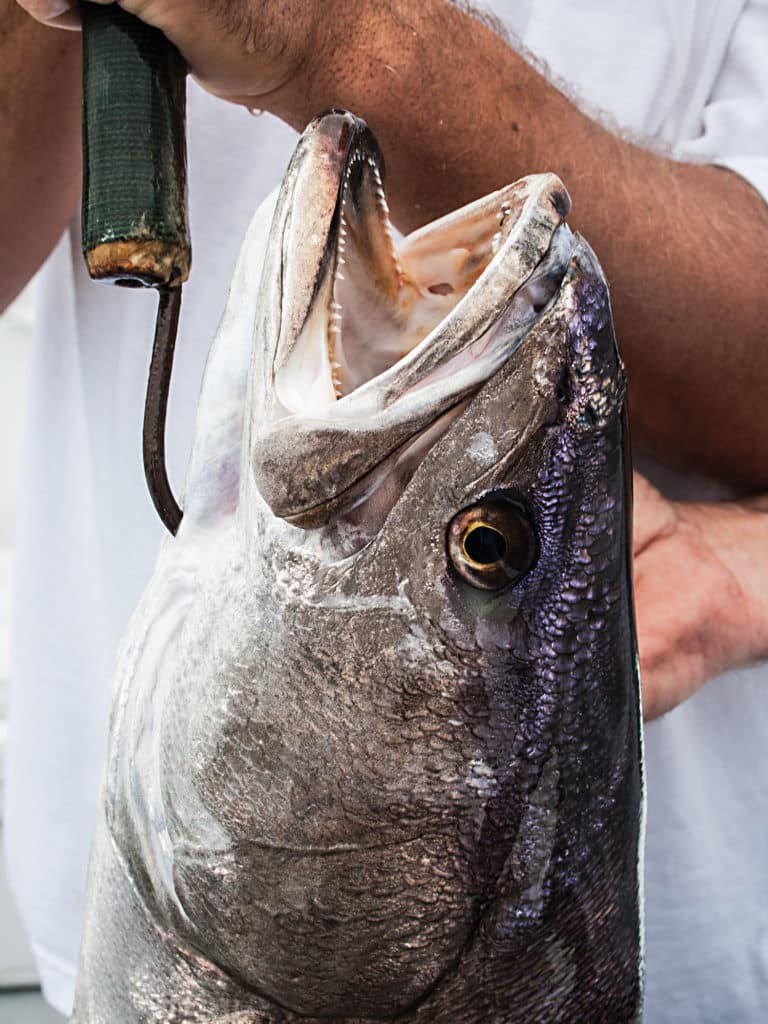
Read the Signs
Stotesbury’s search consists of cruising slowly along the coast in 300 feet of water and scanning toward shore with stabilized binoculars. Stotesbury and his crew keep moving until they see porpoises or birds feeding on bait. The behavior of the porpoises indicates the presence of white sea bass. “Porpoises that are just milling in one spot mean that the pod has a school of bait corralled,” he says. Other astute anglers agree. “If the porpoises are moving fast, there won’t be any sea bass with them,” Brightenburg says. That’s because these big croakers just aren’t that fast and lack the stamina to keep up with a swift pod of porpoises.
“You want the porpoise to be swimming slowly, rolling on the bait,” Brightenburg says. “If you see this kind of behavior, get there fast and start fishing.” Birds also guide the way. Terns are one of the best indicators, especially when the small white birds flit and dive at the surface. Other birds serve as strong indicators, including cormorants, says Uribe. “The best open-water white sea bass bite I ever had was under eight cormorants,” he says. “They were diving to feed on a ball of anchovies as a school of sea bass pushed the bait up from below.”
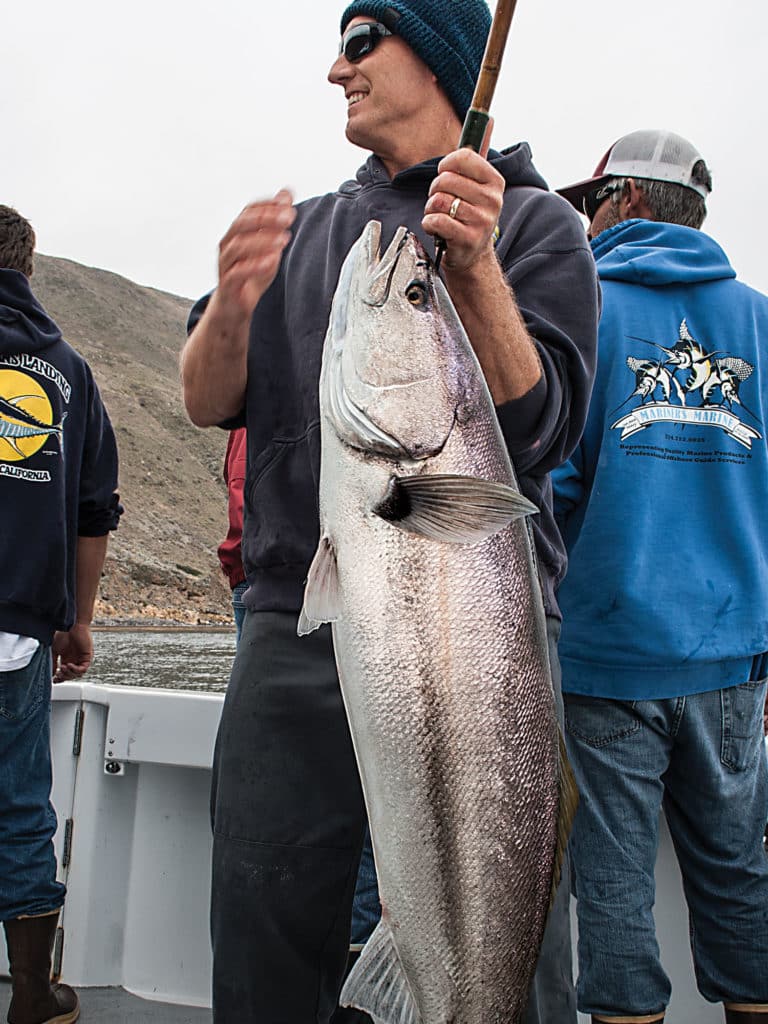
Quiet Approach
White sea bass experts exercise stealth when they get close to baitballs. “I like to get upwind, shut down and drift toward the action,” Stotesbury says. Avoid slamming hatches or clomping about loudly on deck. Anglers on larger boats are known to shut off their generators and drift rather than anchor. This eliminates the anchor noise and lets you move the boat quickly to follow the action.
Fish finders become a priority when white sea bass hold deep, says Stotesbury. If the fish are around, their large air bladders allow you to mark them particularly well. He also uses StructureScan on his Simrad unit to pinpoint fish. “I set the range to 100 feet on either side,” he says. “Bait schools show as a light fuzz, while the big croakers look like a cotton ball on the screen.”
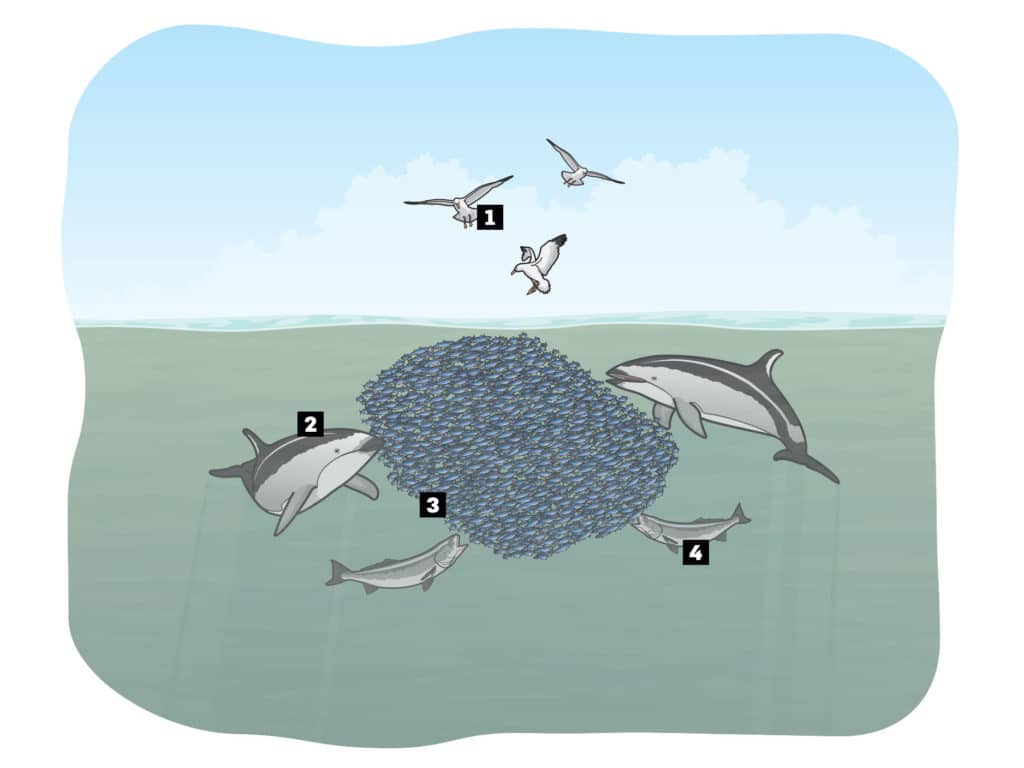
Lazy Baits
White sea bass don’t like to work hard for their meals, so slow-moving lures and baits produce best. A winning presentation in open water is a lure-and-live-mackerel combination known as a hamburguesa (“hamburger” in Spanish). Choose a chrome spoon, such as a Luhr Jensen 2¼-ounce Krocodile, or a jig, such as a Tady 9 or A1, fitted with a single 8/0 or 9/0 Siwash hook. Stotesbury says, “The flash attracts attention, and the weight slows the bait.” Anglers, such as Uribe, also like to add a swivel between the lure and hook to prevent fish from tearing loose as they twist during the fight.
Simplicity rules when fishing the hamburguesa. Hook a 6- to 9-inch-long mackerel in the roof of the mouth and out the top of the snout to prevent the hook from turning back into the bait. Baiting with a larger mackerel keeps smaller species away. Let the rig sink until it’s out of sight, usually about 30 feet. Place the rod in a holder with a medium drag setting and let the lure bob with the waves. Bobber rigs that suspend a live mackerel or hamburguesa under the bait schools are just as effective. Balloons or Danielson Easy Drifter Floats help present baits at controlled depths and drift farther away from the boat.
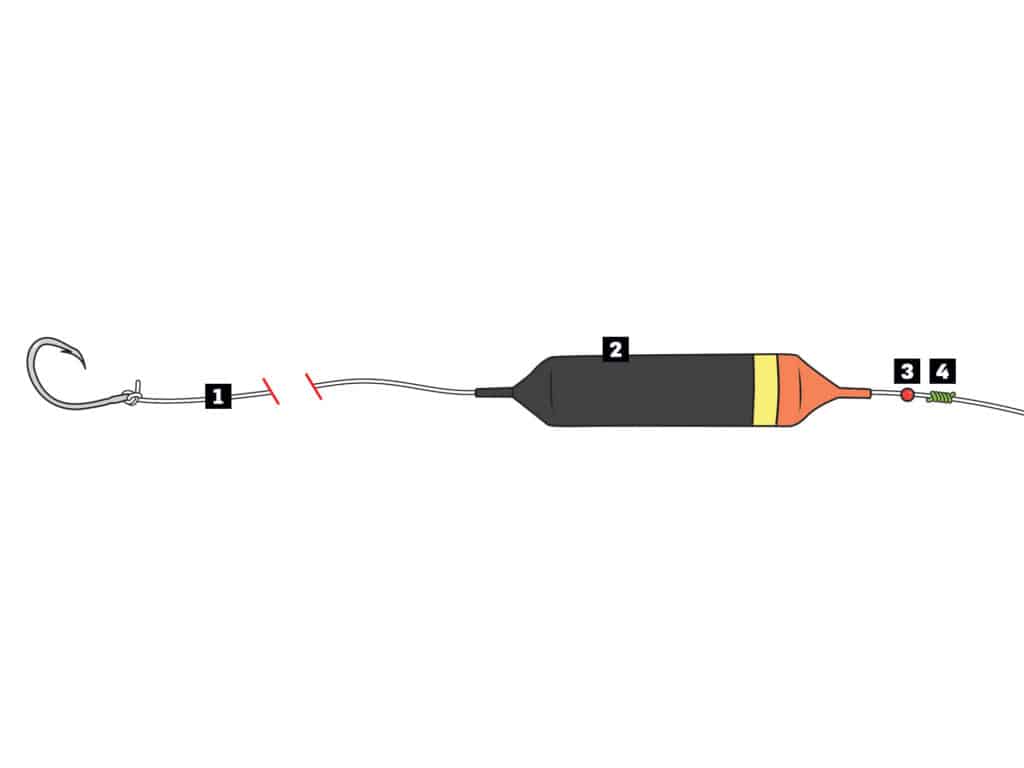
Let ‘Em Soak
Experts fish as many rods as possible, staggering baits at different depths to find the strike zone. Subtle bites are the norm; the rod tip dances as a big white clamps down on the mackerel and maneuvers the bait to swallow it head first. Brightenburg warns against setting the hook too soon. “Don’t touch a thing until the rod bends over and line peels off the reel,” he says. “Then pick it up and tighten the drag. Most of the time, the hook sets itself.”
As white sea bass have beefed up in recent years, so has the tackle. Experts pick rods and matching lever-drag reels rated for 40- to 60-pound line. The main line is 65- to 80-pound braid with an added 25-foot top shot of 50- to 80-pound fluorocarbon.
These croakers rank as one of the most coveted game-fish species along the Southern California coast, and now anglers who put in time on the water are learning new ways to catch them, thanks to the porpoise connection.









